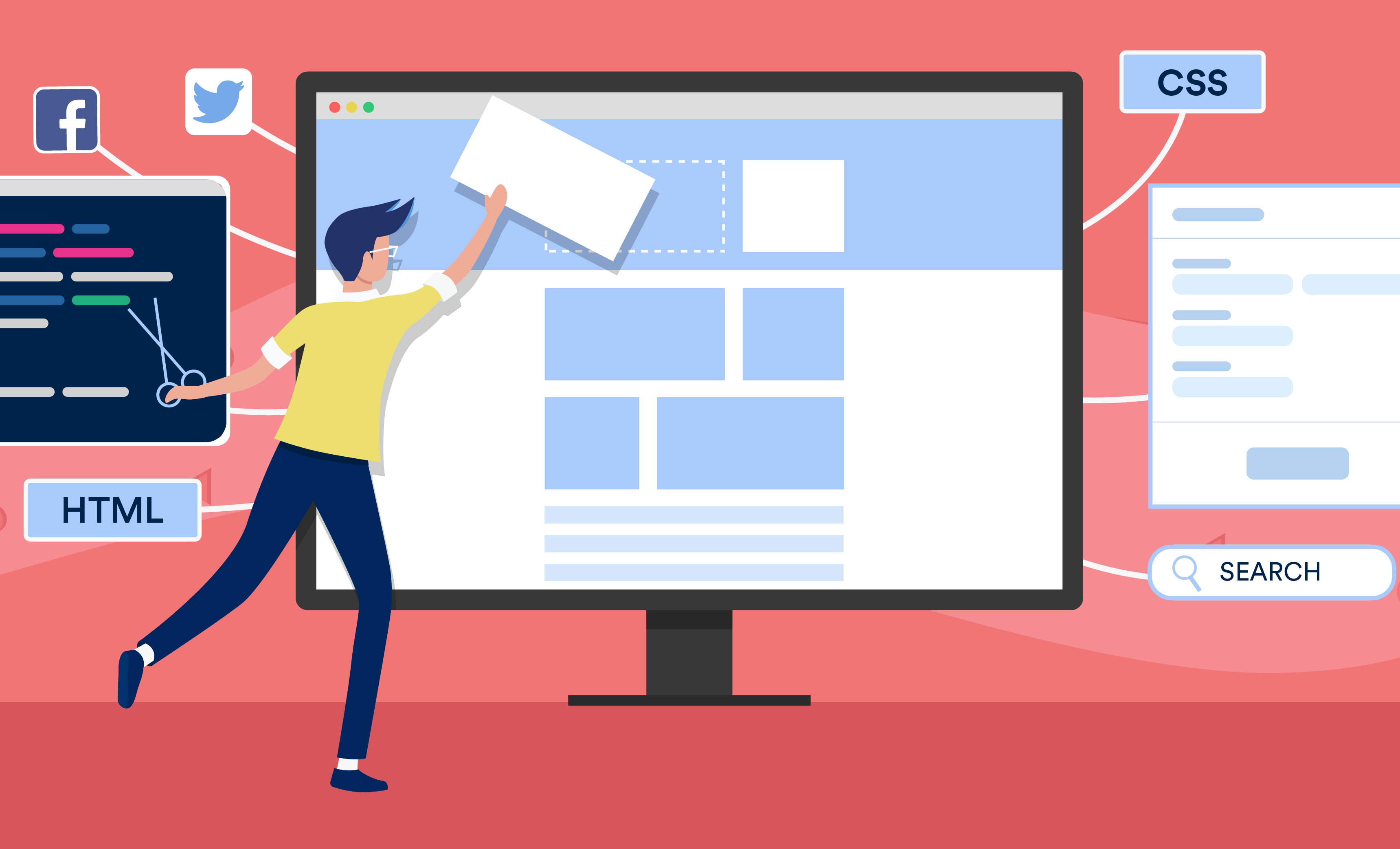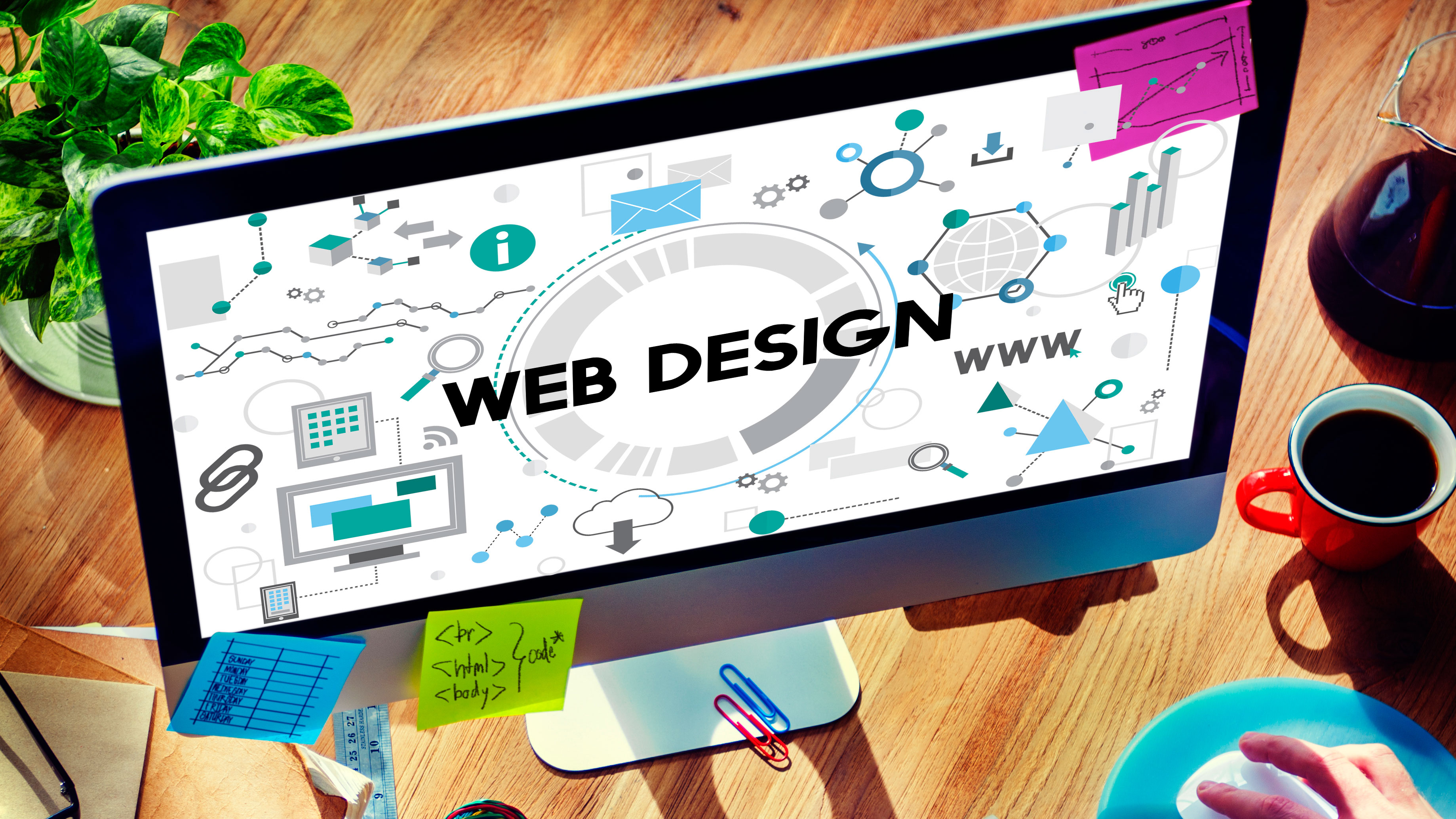All Categories
Featured
Table of Contents
- – Web Design Services + Website Development Agen...
- – Web Design Services By Freelance Website Desi...
- – Awwwards - Website Awards - Best Web Design T...
- – Design Principles - U.s. Web Design System (U...
- – Modern Website Designs - Best Web Page Design...
- – Why Web Design Is Dead - - Ux Magazine Tips a...
- – Web Design - The First 100 Years - Idle Word...
- – What Is Web Design? - Interaction Design Fou...
- – The Leader In Website Design – Squarespace T...
- – What Can I Do With A Web Design And Developm...
- – Web Design And Development - Invision Tips a...
Web Design Services + Website Development Agency Tips and Tricks:
Quick summary Usability and the energy, not the visual design, figure out the success or failure of a site. Because the visitor of the page is the only person who clicks the mouse and therefore chooses everything, user-centric design has established as a standard approach for effective and profit-oriented web style - web design frederick md.
and the energy, not the visual design, identify the success or failure of a site. Since the visitor of the page is the only individual who clicks the mouse and for that reason chooses everything, user-centric style has ended up being a standard technique for effective and profit-oriented website design. If users can't use a function, it may as well not exist.
g. where the search box ought to be put) as it has actually currently been performed in a variety of posts; instead we concentrate on the techniques which, utilized correctly, can lead to more sophisticated style decisions and simplify the procedure of viewing provided details. Please notice that you might be thinking about the usability-related articles we've released prior to: Concepts Of Excellent Site Design And Effective Website Design Guidelines, In order to utilize the principles correctly we first need to understand how users communicate with sites, how they believe and what are the fundamental patterns of users' behavior.
Web Design Services By Freelance Website Designers - Fiverr Tips and Tricks:
Visitors glimpse at each brand-new page, scan a few of the text, and click the first link that captures their interest or vaguely looks like the important things they're looking for. There are big parts of the page they don't even look at. The majority of users search for something intriguing (or useful) and clickable; as quickly as some appealing prospects are found, users click.
If a page offers users with top quality material, they are willing to jeopardize the content with advertisements and the design of the site. This is the reason why not-that-well-designed websites with top quality content acquire a lot of traffic over years. Material is more crucial than the design which supports it.

Users don't read, they scan. Notification how "hot" areas abrupt in the middle of sentences. This is common for the scanning procedure. Extremely easy principle: If a website isn't able to meet users' expectations, then designer failed to get his task done correctly and the company loses money. The higher is the cognitive load and the less user-friendly is the navigation, the more willing are users to leave the website and look for options.
Awwwards - Website Awards - Best Web Design Trends Tips and Tricks:
Neither do they scan webpage in a linear style, going sequentially from one website area to another one. Rather users satisfice; they select the very first reasonable alternative. As quickly as they discover a link that appears like it might result in the objective, there is an extremely great chance that it will be right away clicked.
It doesn't matter to us if we understand how things work, as long as we can use them. If your audience is going to imitate you're developing signboard, then design terrific signboards." Users wish to be able to control their internet browser and count on the constant data presentation throughout the website.
If the navigation and site architecture aren't instinctive, the number of concern marks grows and makes it harder for users to understand how the system works and how to receive from point A to point B. A clear structure, moderate visual clues and quickly identifiable links can assist users to find their course to their goal.
Design Principles - U.s. Web Design System (Uswds) Tips and Tricks:

claims to be "beyond channels, beyond items, beyond distribution". What does it mean? Because users tend to check out sites according to the "F"-pattern, these 3 declarations would be the very first elements users will see on the page once it is filled. Although the style itself is simple and user-friendly, to understand what the page is about the user needs to look for the answer.
Once you have actually accomplished this, you can interact why the system is beneficial and how users can benefit from it. Don't Waste Users' Persistence, In every project when you are going to use your visitors some service or tool, attempt to keep your user requirements minimal.
First-time visitors are prepared to, not filling long web kinds for an account they might never ever use in the future. Let users explore the website and discover your services without forcing them into sharing private data. It's not reasonable to force users to go into an e-mail address to check the function.
Modern Website Designs - Best Web Page Designers Tips and Tricks:
Stikkit is an ideal example for an easy to use service which needs practically absolutely nothing from the visitor which is unobtrusive and soothing. Which's what you desire your users to feel on your web site. Obviously, Termite requires more. However the registration can be carried out in less than 30 seconds as the kind has horizontal orientation, the user does not even require to scroll the page.
A user registration alone is adequate of an impediment to user navigation to cut down on inbound traffic. Handle To Focus Users' Attention, As sites provide both static and dynamic material, some aspects of the user interface draw in attention more than others do.
Focusing users' attention to specific areas of the site with a moderate usage of visual components can help your visitors to get from point A to point B without thinking of how it actually is supposed to be done. The less enigma visitors have, the they have and the more trust they can develop towards the company the website represents.
Why Web Design Is Dead - - Ux Magazine Tips and Tricks:
4. Pursue Feature Direct exposure, Modern web styles are normally slammed due to their method of directing users with visually appealing 1-2-3-done-steps, large buttons with visual results etc. From the design perspective these aspects in fact aren't a bad thing. On the contrary, such as they lead the visitors through the site content in a very simple and easy to use method.
The site has 9 primary navigation choices which are noticeable at the very first look. The option of colors may be too light, though. is a basic principle of successful interface style. It does not actually matter how this is achieved. What matters is that the material is well-understood and visitors feel comfortable with the way they interact with the system.
Rather a cost: simply what visitors are looking for. An optimum option for reliable writing is touse short and succinct expressions (come to the point as quickly as possible), usage scannable design (categorize the material, utilize multiple heading levels, utilize visual elements and bulleted lists which break the flow of consistent text blocks), usage plain and objective language (a promotion doesn't require to sound like advertisement; offer your users some affordable and objective factor why they need to use your service or remain on your website)6.
Web Design - The First 100 Years - Idle Words Tips and Tricks:
Users are seldom on a website to take pleasure in the style; in addition, in many cases they are looking for the info despite the style - web design frederick md. Pursue simplicity instead of complexity. From the visitors' point of view, the best website design is a pure text, with no advertisements or further material obstructs matching exactly the query visitors utilized or the material they've been trying to find.
Finch clearly presents the details about the website and provides visitors an option of options without overcrowding them with unnecessary content. 7. Do not Hesitate Of The White Area, Really it's actually hard to overstate the significance of white area. Not just does it assist to for the visitors, but it makes it possible to view the information provided on the screen.
Complex structures are more difficult to check out, scan, evaluate and deal with. If you have the choice in between separating two design segments by a noticeable line or by some whitespace, it's usually better to utilize the whitespace solution. (Simon's Law): the better you manage to offer users with a sense of visual hierarchy, the simpler your material will be to view.
What Is Web Design? - Interaction Design Foundation (Ixdf) Tips and Tricks:
The very same conventions and rules need to be used to all elements.: do the most with the least quantity of cues and visual components. 4 significant points to be considered: simplicity, clarity, distinctiveness, and emphasis. Simplicity consists of only the elements that are crucial for interaction. Clearness: all elements must be developed so their significance is not uncertain.
Conventions Are Our Good friends, Conventional design of website aspects doesn't result in an uninteresting web website. In truth, as they decrease the learning curve, the requirement to figure out how things work. It would be an use headache if all sites had different visual discussion of RSS-feeds. That's not that various from our routine life where we tend to get used to basic concepts of how we arrange information (folders) or do shopping (positioning of products).
understand what they're expecting from a site navigation, text structure, search positioning etc. A normal example from use sessions is to equate the page in Japanese (presuming your web users don't understand Japanese, e. g. with Babelfish) and provide your use testers with a job to find something in the page of different language.
The Leader In Website Design – Squarespace Tips and Tricks:
Steve Krug recommends that it's better to, however benefit from conventions when you don't. 10. Test Early, Test Often, This so-called TETO-principle must be applied to every website design task as use tests frequently provide into considerable problems and issues related to a given design. Test not too late, not insufficient and not for the wrong factors.
Some crucial points to remember: according to Steve Krug, and testing one user early in the task is much better than screening 50 near completion. Accoring to Boehm's very first law, errors are most regular during requirements and design activities and are the more pricey the later on they are removed.
That indicates that you design something, test it, repair it and then evaluate it once again. There may be issues which have not been discovered during the first round as users were practically obstructed by other issues. functionality tests. Either you'll be pointed to the problems you have or you'll be indicated the lack of significant style flaws which remains in both cases a helpful insight for your job.
What Can I Do With A Web Design And Development Degree? Tips and Tricks:

This holds for designers also. After you have actually dealt with a website for couple of weeks, you can't observe it from a fresh point of view any longer. You know how it is constructed and for that reason you know precisely how it works you have the wisdom independent testers and visitors of your site wouldn't have.
It can be linked to other locations such as graphic style, user experience, and multimedia arts, however is more aptly seen from a technological standpoint. It has become a big part of individuals's daily lives. It is difficult to think of the Web without animated graphics, various designs of typography, background, videos and music.

During 1991 to 1993 the Web was born. Text-only pages could be viewed using a basic line-mode internet browser. In 1993 Marc Andreessen and Eric Bina, created the Mosaic browser. At the time there were numerous web browsers, however the majority of them were Unix-based and naturally text heavy. There had been no integrated method to graphic design aspects such as images or sounds.
Web Design And Development - Invision Tips and Tricks:
The W3C was developed in October 1994 to "lead the Web to its complete capacity by establishing typical protocols that promote its advancement and guarantee its interoperability." This discouraged any one company from monopolizing a propriety internet browser and programs language, which could have changed the effect of the Internet as a whole.
As this has actually taken place the technology of the web has also moved on. There have actually also been significant changes in the way people utilize and access the web, and this has actually changed how sites are created.
Learn more about Lovell Media Group LLC or TrainACETable of Contents
- – Web Design Services + Website Development Agen...
- – Web Design Services By Freelance Website Desi...
- – Awwwards - Website Awards - Best Web Design T...
- – Design Principles - U.s. Web Design System (U...
- – Modern Website Designs - Best Web Page Design...
- – Why Web Design Is Dead - - Ux Magazine Tips a...
- – Web Design - The First 100 Years - Idle Word...
- – What Is Web Design? - Interaction Design Fou...
- – The Leader In Website Design – Squarespace T...
- – What Can I Do With A Web Design And Developm...
- – Web Design And Development - Invision Tips a...
Latest Posts
Web Design And Applications - W3c Tips and Tricks:
Top Web Design Companies - Find Web Designers Here Tips and Tricks:
Web Design Courses & Tutorials - Codecademy Tips and Tricks:
More
Latest Posts
Web Design And Applications - W3c Tips and Tricks:
Top Web Design Companies - Find Web Designers Here Tips and Tricks:
Web Design Courses & Tutorials - Codecademy Tips and Tricks: